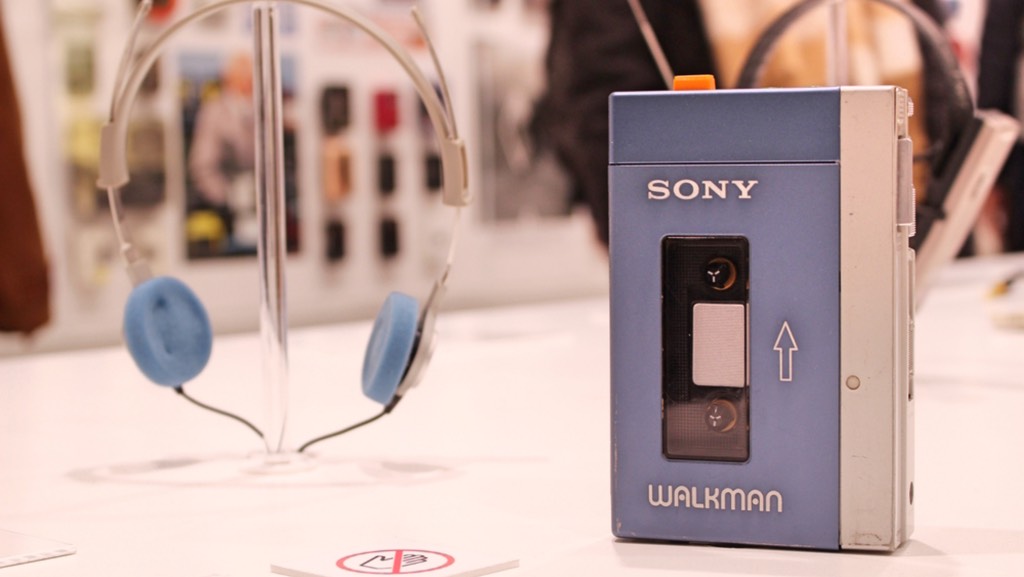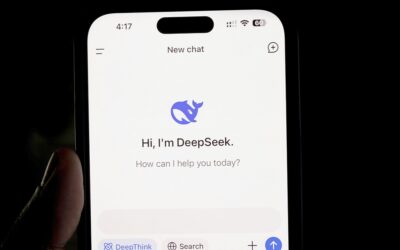UPDATED AGAIN: It was in November or December 1979 that I first encountered the Sony Walkman. A family friend who was an air hostess with Air India walked into the room with the gadget in her hand. A little blue box with ultra-light headphones (the model was TPS-L2). I asked her what it was. She placed the headphones on my head and pressed a button. I was astounded at the sound quality because until then we had only heard mono sound. My generous uncle observed my delight with this new gadget and promised to buy me one. The next year he gave me a silver Sony Walkman II, which was even smaller and lighter than the first model.
The TPS-L2 (see video below) had two headphone sockets for two people to listen to music at the same time. It had a distinctive orange button called the “hotline” to suppress the volume in case you wanted to listen to your companion. This feature is now being introduced in modern-day Bluetooth headphones, but Sony thought about it in 1979.
The word “Stereo” was a big word in 1979 because until then, all music and music systems were monoaural (mono). “Stereo” was monogrammed on the Sony Walkman and on all the cassette players that came out after that. For the first time in my life, I was listening to two-channel stereo sound, and it sounded superb!
The Walkman became a status symbol and everyone wanted one. It featured in 80s movies like Back to the Future and Footloose. Many years later, I saw Bollywood actress Sonam Kapoor listening to a walkman in the movie Neerja, and I felt nostalgic. The other day I saw Chris Pratt with a Sony Walkman TPS-L2 in the movie Guardians of the Galaxy.
The Evolution
I keenly followed the evolution of the Sony Walkman over the years, requesting friends and relatives to bring back catalogues from electronic stores during their international trips. We did not have the Internet or eBay back then, and the local stores were not yet selling personal stereos. The only way to get one was to beg a relative to buy one during their “foreign” trip — or to sneak across the border into Nepal and smuggle one back to India!
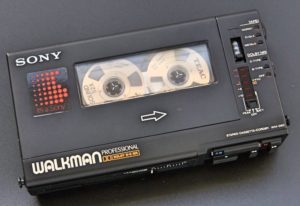
Sony Professional Walkman D6C
As time passed, Sony made the Walkman thinner and lighter and packed in more features like Direct Drive and Auto Reverse. One model was smaller than the dimensions of a cassette tape. Another was so thin, the battery had to be attached externally through an adapter. Fans will remember the Professional Walkman D6C (see image), which was essentially a portable tape deck.
And then Sony brought out the Sports Walkman (image below) — a waterproof model in a distinctive bright yellow case.
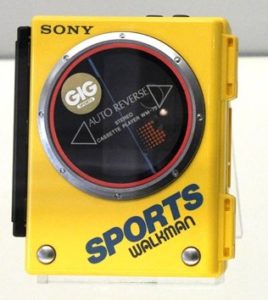
Sony Sports Walkman
Other brands also started making “walkmans” but of course, they could not use this term as it is a Sony trademark. But “walkman” became synonymous with the personal stereo player. Aiwa, Toshiba, Philips, Panasonic, and Sanyo made some fine models. I used some of these players and compared these to the original Sony Walkman.
But did you know that “Walkman” wasn’t the first brand for Sony’s personal audio players? It was called the Soundabout in the US and Freestyle in Australia.
Another fact about the Sony Walkman: The prototype was a modified Sony tape recorder used by journalists, called the Pressman.
Walkman headphones evolved too. They became lighter, and sounded better over the years.
In the 1990s, the music got more thumps and beats, so bass was in demand. And Sony produced the Mega Bass Walkman. We also saw the sleek two-in-ones (radio cum cassette player) becoming bloated to provide more bass sounds. These came to be known as “ghetto blasters” or “boom boxes”.
With the advent of the Compact Disc in 1982, Sony engineers set out to create a portable CD player and called it the Discman (D-50/D-5). Sony also experimented with other formats such as the optical MiniDisc and produced the MD Walkman.
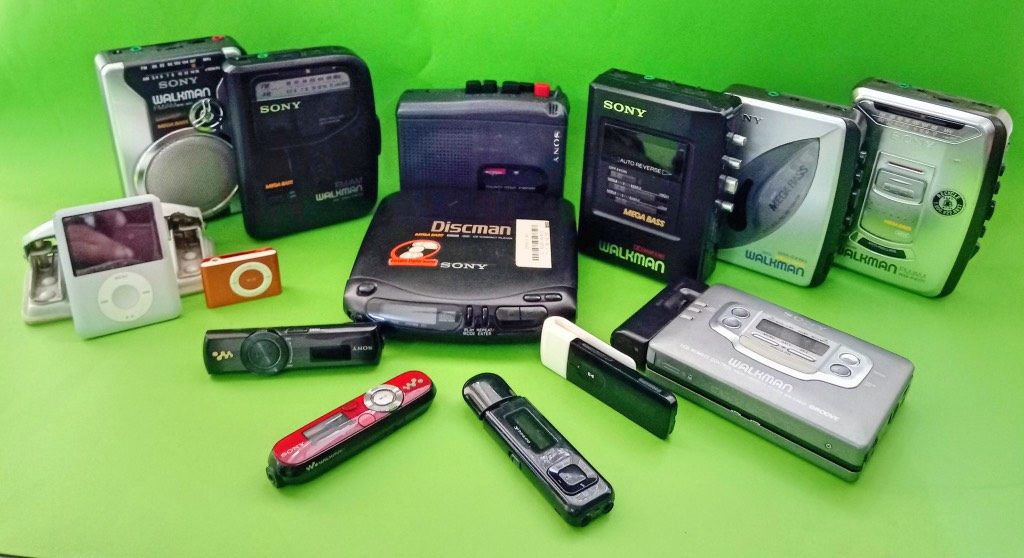
From Walkman, to Discman, to USB MP3 player to Apple iPod. This is the author’s personal collection.
The Age of Digital
Meanwhile, recording studios were moving from analogue to digital with pulse code modulation (PCM) and other digital processing technologies. The Internet came along in the mid-1990s, and not long after that, the MP3 format was invented. Music became digital and the medium became portable MP3 players. Songs could now be downloaded from the Internet and transferred to portable MP3 players via personal computers. The cassette was on its way out, and shops stopped selling them. I remember a file sharing service called Napster in 1998. We used it to get old and new songs for free! Then came the Torrents.
As we moved into the 2000s, Steve Jobs (and Apple) introduced us to the iPod in 2001. Jobs told the audience they could have 1,000 songs in their pocket. That’s the equivalent of a lot of cassette tapes and CDs. A mixtape, for instance, can hold only 24 songs, at the most. So people stopped buying cassettes and CDs once the iPod came along and became a status symbol.
By 2010, Sony (and others) stopped manufacturing the Walkman player. By then, Sony sold nearly 400 million units of the Walkman worldwide. Sony reintroduced the Walkman brand when it launched its line of mobile phones. Today, Sony continues to manufacture MP3 players under the Walkman brand.
Walkman Lives On
I will always remember the Sony Walkman player which was one of my most prized assets during my teenage years. I bought several models over the years and have a collection of them in my cupboard (see image above). Yet I can’t get enough of the Walkman, and I continue to search for the older “vintage Walkmans” on eBay. I hope to get lucky and find the very first model (TPS-L2).
I am also hoping that cassette tapes and the Walkman make a comeback.
If you are like me and feel nostalgic about the little music player, head to one of these websites to gaze at the vintage walkmans.
(In this article “walkman” is used as a generic term in lower case.).

